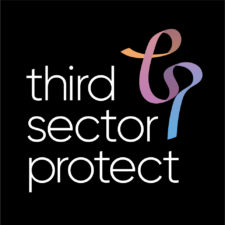
Partnering with ‘For-Profit’ companies
Adequate funding is essential for a not-for-profit organisation, and partnering with a company (known as cause-related marketing) can be a lucrative option to guarantee revenue. However, risk in these relationships tends to fall disproportionately on the not-for-profit partners, either because they are putting their most substantial asset at risk (their name) or because their hope for financial support can cloud their exercise of due diligence. These errors can result in a loss of public trust or in costly litigation. What’s more, cause-related marketing campaigns can be subject to registration, contract and disclosure requirements, and they often have potential tax implications on the beneficiary not-for-profit as well. It is crucial that when partnering with for-profit companies that not-for-profits realise what is at risk and take steps to protect themselves and their names.
What is the Risk?
When a for-profit company uses a not-for-profit name to increase revenue and add to corporate profits, the conditions of payout are much different from in a philanthropic exchange. Often, a company will press to have its name or products appear prominently in the not-for-profit media outreach efforts. When it allows itself to become an advertiser for the company, a not-for-profit risks being seen by the public as having sold its good name to a for-profit brand, or worse, having deceived the public by condoning an unworthy product. This erosion of public trust can be extremely detrimental to a not-for-profit organisation.
Liability and Litigation
In rare cases, a not-for-profit could risk litigation from disillusioned consumers for breach of duty. These legal actions can be extremely costly and lengthy. Further, should conflict arise with the partner company, not-for-profits risk costly legal actions for breach of contract. It is prudent to think twice before entering into a contract with a company, no matter the sum, as potentially negative consequences, could greatly outweigh benefits.
What Can Be Done?
There are several steps a not-for-profit organisation can take to protect itself when considering a partnership with a for-profit company. First and most importantly, it is fundamental to thoroughly evaluate a potential for-profit partner’s reputation. Examine its record for telling the truth in its ads, verify all statements and figures released to the press and check that in the past, allocation of funds has been as promised to partners and the public.
Important considerations to revisit when entering into a potentially risky relationship with a company include the following.
- Your name is your most valuable asset, and it should not be underpriced.
- Cause-related marketing is a business deal and differs from philanthropy.
- Ensure that payment and use of your name are on your terms, and control all uses of your name. All promises should be in writing.
- Ensure that you are in compliance with all applicable laws.
- Check every deal you make with an accountant and a solicitor.
- As the not-for-profit, you bear most of the risk. For this reason, you should carefully consider the financial cost of the relationship.
- Establish an organisation-wide policy for cause-related marketing ventures, and build on it as your organisation gains experience.
Transferring Risk
Beyond taking these preventive steps, it is important to ensure that you are properly covered should you become involved in litigation for breach of contract or breach of duty. A Directors and Officers (D&O) insurance policy serves this purpose and is fundamental for all not-for-profit organisations. Contact the insurance professionals at Third Sector Protect for more information about transferring your risk with insurance and for other risk management solutions for your not-for-profit organisation.
For additional information on supporting and growing your not-for-profit, read our blog post: What if your charity is changing?
For more tips and tricks on all things third sector follow us on Facebook, Twitter & LinkedIn.
 |  |  |







